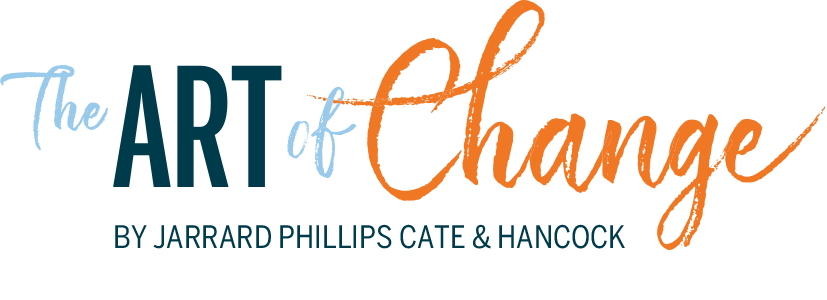
The Virtuous Cycle of Listen and Lead
When Dr. David Pate retires at the end of January 2020, he will have led Idaho-based St. Luke’s Health System for a decade.
During that time, the organization has undergone radical change and plenty of garden-variety change. Like any healthcare executive, Pate has been in the middle of constant evolution, making hard decisions on how to transform the organization and position it for a future built on value and patient-centered care.
Today, he attributes St. Luke’s success to excellent collaboration among health system leadership and a willingness – by all stakeholders and at all levels – to listen. In addition, Pate individually and the organization as a whole have realized the value of distilling complex messages into stories to promote buy-in and create further collaboration. It’s a virtuous cycle.
Here are Pate’s keys to effective listening and storytelling.
Listening
Make your intentions clear
Listening can take different forms and serve different purposes. Are you listening to understand why someone did something wrong or are you listening to survey a group for opinions? Do you want input to inform a decision or do you want people to respond to a decision you’ve already made? Whatever the purpose, be clear with the people you’re listening to. Pate noted that people often assume you’ve already made a decision and aren’t so much listening as pretending to listen with the intent of talking them into your point of view.
“You need to be clear about whether you’ve made a decision or not,” Pate explained. “You need to be clear about what you’re looking for. And you have to be clear that you’re looking for input from a variety of sources.”
If people know why you’re asking and what you plan on doing with the information, they’ll likely trust you more and give you more direct feedback.
Takeaway: Explain exactly what you’re asking about, the type of feedback you need, and how you’re going to use the information you collect.
Listen more. Or less
We want to be careful to avoid self-help traps and clichés in Art of Change. It would be easy to offer canned advice on how to listen and then leave it there. But the reality is that leaders have to modulate their approach depending on the situation. Listening isn’t always the best thing. Pate noted that the amount of listening versus talking depends on context.
He recently dealt with an issue where a couple of people were not acting “in concert with” St. Luke’s values. While he needed to learn about the situation, he also had to take a strong stance on the problem.
“I had to listen to understand what happened, what the circumstances were, how they reacted,” he said. “So, it was maybe 20 to 30 percent listening. But I felt so strongly about what had happened and wanted to make sure I was very clear with these leaders and two others who were watching to see how I handled it. I probably spent 70 percent of my time articulating why this was unacceptable, why this was not in concert with our values and what my expectations were going forward.”
In other instances, people will ask an executive to help with issues that they’re unable to agree on. Then the balance flips.
Said Pate: “I spend 80 percent of my time listening to make sure that I really understand the arguments and positions and criticisms of each other’s positions. Only 20 percent of my time is spent responding with, ‘Okay, I’ve heard everything and here’s my decision.’ And, it is also important to acknowledge the value of everyone’s input in helping me reach my decision and explaining why I reached it so that even when some people don’t agree with the decision, hopefully, everyone will know I was thoughtful and considered their ideas in getting there.”
Takeaway: Prepare. Outline the high-level types of situations you deal with on a weekly basis and, for each one, determine the information you need to obtain and what you need to present. Use that as a guide to determine your listening-talking ratio and to identify questions. With this prep work, you’re much more likely to respond efficiently and effectively when a real situation arises.
Provide options…
Obviously, when making big decisions that will affect thousands of people, getting meaningful feedback from those people is a good thing. But just as obviously, it’s impossible to obtain feedback from every single individual. St. Luke’s employs over 14,000 people across 200 clinics and eight hospitals. They work days, nights, weekends, and oh, by the way, they’re all really busy taking care of patients. Not to mention all the different personalities involved.
As a result, it’s impossible that a healthcare executive can collect necessary information through just one medium. Even in a small group setting like an executive team meeting, some people may be better off writing and others speaking. Leaders should provide options to maximize their ability to listen. For Pate, this means a huge time investment. While developing strategies to guide the system into the 2020s, Pate and his team surveyed those 14,000 employees.
“You’ve got to have multiple channels,” he said. “Some of this involves one-on-one discussions. Some of this involves attending a meeting and taking questions. I’ve done webinars and taken questions at the end of the webinars. I’ve held forums and taken Q&A at the end of the forums. Sometimes people just write me emails. I also publish a blog to explain some of the change that we’re going through and sometimes people have written in questions on the blog comment section.”
Takeaway: Don’t assume one or two methods will be enough, and don’t get locked in on the methods you personally prefer. Work with your marketing and comms team to develop a set of channels for people to submit ideas and put in place an internal marketing plan to ensure people are aware of those channels and understand why you’re asking for feedback.
…But set limits…
On the other hand, you can’t do everything, be everywhere. At some point, you’ve got to say “Enough.”
Kim Fox, partner at Jarrard Inc., has spoken about an initiative at a previous organization that was announced through multiple channels – including hanging info cards on office doors like those hotel do-not-disturb signs (yes, this is about speaking, not listening, but the point is the same).
“Every day,” said Fox, “we had people who’d say, ‘Well, nobody told me.’ It was almost belligerent. Like, ‘I’m so very busy and if you don’t come tell me personally then I wasn’t invited.’”
Pate had a similar take. “It’s certainly not possible to communicate effectively with everyone in a system, our size,” he said. “I think the important thing is to give everybody the opportunity. Whether they avail themselves of that or not is another question.”
Takeaway: See the previous section.
…And expectations
We mentioned it before: To get good feedback, tell people what you’re going to do with what you hear. Doesn’t matter if it’s thousands of employees or a leadership team of five.
Pate noted that many of the decisions he must make land at his door when people below him can’t come to an agreement. Any decision is easier when everyone agrees. When there’s disagreement, Pate makes the process very clear.
“I will convene them, and I will let them both make their arguments for and against the different positions,” he said. “Then I will say ‘Okay, I’m going to take all of this into consideration and make my decision by Monday at four.”
Everyone benefits from this decisive approach. First, people need to have a direction, regardless of what the direction is. Pate said that people do care about their position, “but the big thing is they want to be able to move forward.” So, when he announces a decision, he’ll explain some of the reasoning, which generates appreciation even from people who disagree with it.
In addition, setting expectations sets accountability for the leader. “Monday at four” is a hard deadline, limiting the opportunity for waffling. “There are some leaders who have a challenge of making tough decisions because they’re afraid to be wrong,” he explained. “That’s certainly a risk but very seldom does just taking a few more days mitigate it.”
If a leader doesn’t make timely decisions, or frequently revisits those decisions after the fact, the perception will develop that the person isn’t capable of decisive action.
Takeaway: Build a decision-making timeline based on the volume of information being collected and – obviously – the urgency of the decision. Then stick with it. Chances are, you don’t need the extra time you may feel that you want. As Kim Fox noted, for a thoughtful and well-trained professional, a “gut feeling” can actually be a remarkably accurate guide.
Look under the hood
Sometimes, everyone is closer to consensus than anyone thought. People may be talking past each other, artificially magnifying the level of disagreement. Pate has run into situations during his decade at the helm of St. Luke’s where listening to his team uncovered a language problem. A group recently approached him, deadlocked, seeking guidance over a decision. After reviewing the situation in a verbal discussion, he asked them to write out areas of agreement and come back with the gaps. Though time consuming, the result was a relatively easy-to-resolve 20 to 30 percent disagreement.
“It forced them to sit down, put thoughts on paper and be clear,” he said. “What was happening when they were arguing this verbally is they found themselves using terminology that each side interpreted differently. Having them put it down on paper, forced them to be concrete, to choose their words and to flush out what they really all could agree to. From there the disagreements became clear.”
Takeaway: Shake things up. Put people – including yourself – in a different or unnatural environment so they – you – are forced to slow down and think about the issue at hand. For someone who likes to hear information audibly, this could mean reading employee comments rather than having them come up to a microphone at a townhall. It could mean presenting written arguments rather than verbal ones, as Pate did. Regardless, find ways to slow down and evaluate your assumptions.
